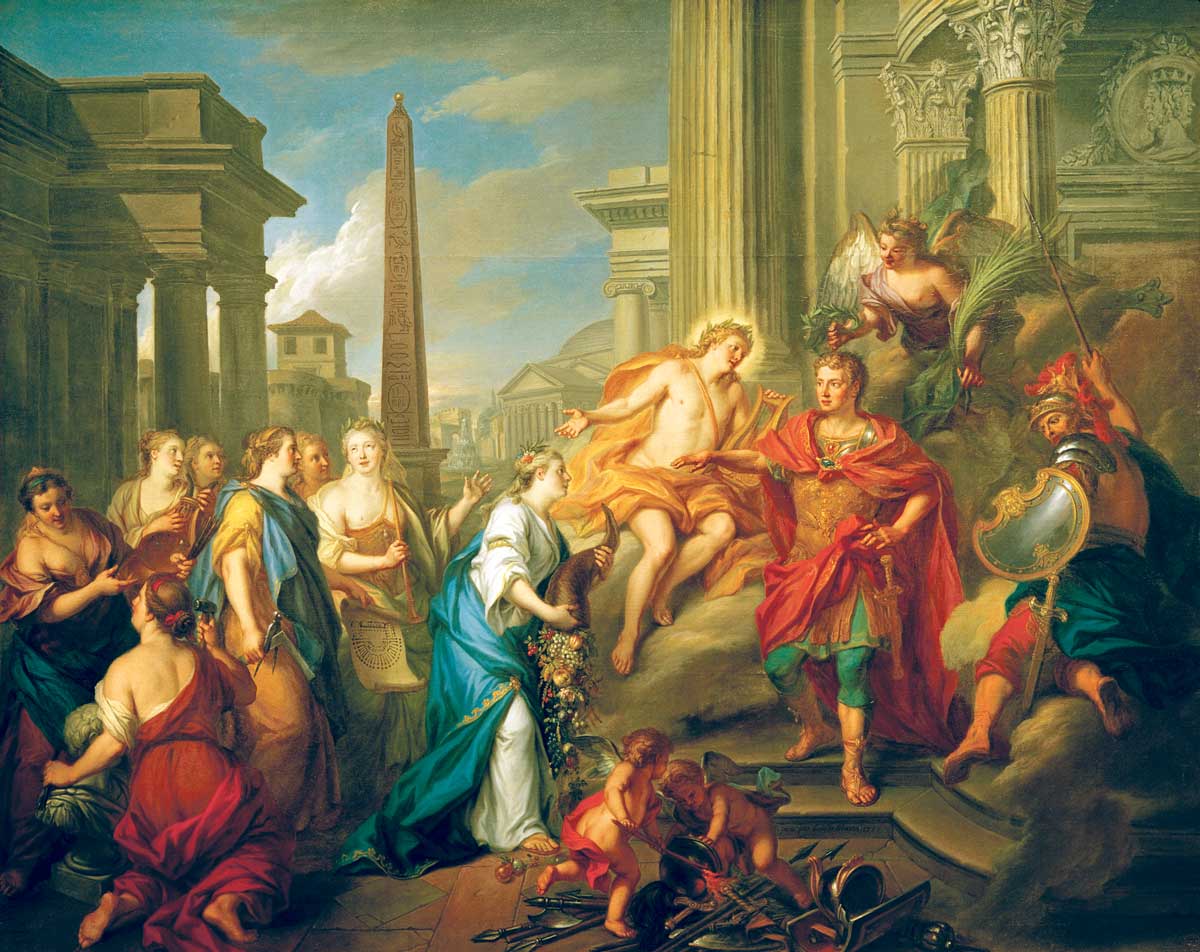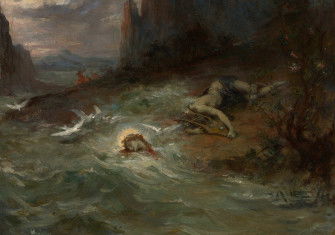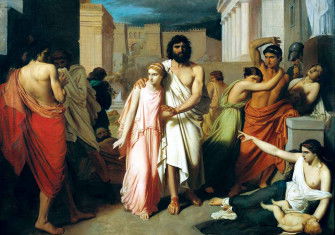Augustus Closes the Temple of Janus
Rome’s First Citizen brings peace to its territories.

Following years of Civil War, Octavian, Julius Caesar’s grand-nephew and adopted son, was granted the title Augustus, Princeps Civitatis (First Citizen) of Rome on 16 January 27 BC. In this celebratory painting by Louis de Silvestre, Augustus orders the doors at both ends of the Temple of Janus to be closed. The temple, which stood in the Forum of Ancient Rome, had been built by Numa Pompilius, the legendary second king of Rome, and contained a statue of the two-faced god, who looks to the future and the past. The Gates of Janus, as its doors were known, were closed when Rome was at peace and opened in times of war: they were usually open.
In a meeting held near what is now the northern Italian city of Bologna in 43 BC, Octavian had forged an alliance with Mark Antony and Marcus Lepidus to avenge Caesar’s assassination on 15 March 44 BC by a conspiracy led by Brutus and Cassius. Almost inevitably, rival ambitions were to tear apart what became known as the Second Triumvirate. Marcus Lepidus was forced into exile, while the forces of Mark Antony and his lover, the Egyptian ruler Cleopatra, were defeated by those of Octavian at the naval battle of Actium, which took place on the west coast of Greece on 2 September 31 BC. Antony and Cleopatra were pursued to Alexandria, where they were overwhelmed a year later and, in the wake of their final defeat, both committed suicide. Cleopatra’s son by Julius Caesar, Caesarion, was executed on the orders of Octavian: there could be room for only one ‘son of Caesar’.
Having ostensibly returned the Senate to the heart of Roman politics, in a nod to republican values, the body conferred a new title on Octavian: Augustus, the ‘illustrious one’. From then on, he laid the foundations for the Roman Empire, which would end only with the Fall of Contantinople, capital of the Eastern Empire, to the Turks in 1453, 1,500 years later.
Augustus Closing the Temple of Janus is the work of the 18th-century French painter, Louis de Silvestre, who was court artist to King Augustus II of Poland. A celebration of the ruler’s illustrious namesake would have done no harm to Silvestre’s career: the king’s son, Friedrich August II, Prince-Elector of Saxony, had already made him director of the Royal Academy of Arts in Dresden, in whose Gemäldegalerie the painting resides.






